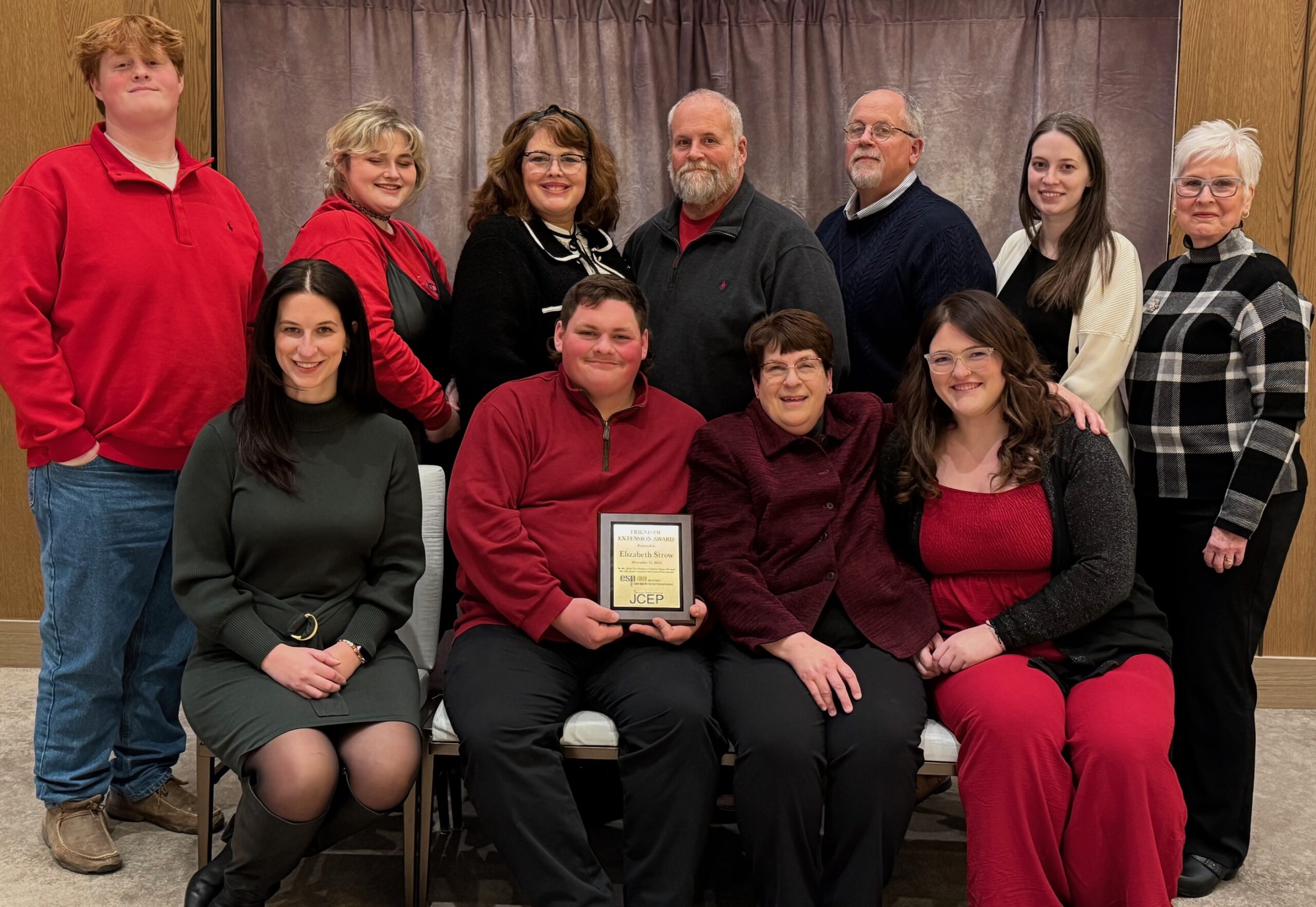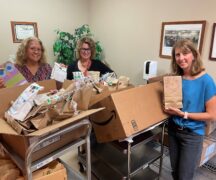By JULIE CARLE
BG Independent News
From 4-H camp experiences and cardiovascular health programs to sustainable food systems and environmental quality, the Wood County Extension Office–and all extension offices across the state and the nation–are committed to providing access to education.
Extension offices are the outreach component of the nation’s land grant institutions, explained Megan Arnold, area leader for Ohio State University Extension in Wood and Lucas counties, at a recent Bowling Green Exchange Club meeting.
Created by the 1862 Morrill Act, land grant universities were established to provide access to education, initially emphasizing agriculture and mechanic arts. The 1914 Smith-Lever Act enhanced cooperative extension through partnerships between land grant universities and the U.S. Department of Agriculture.
“Unique to the legislation was that it established local, state and federal government investment in the work of extension,” Arnold said.
“There is sometimes a perception that extension is more about rural or agricultural aspects, but it is really about access to education, information and knowledge for everyone in the state,” she said.
“Extension is not only for rural areas. There are very strong, vibrant programs in our urban areas as well; they might just look different,” she said. For example, the urban 4-H program is more often offered as in-school programming rather than the traditional summer experience that is familiar in Wood County.
Over time, the focus areas expanded to include agriculture and natural resources, community development, family and consumer sciences, and youth development. Ohio has extension offices in all 88 counties and more than 800 employees.
“Extension is a complex organization within an even more complex organization (Ohio State University), but with that comes the power, resources and education of Ohio State,” Arnold said.
Today, Wood County Extension includes 13 educators, program assistants and support staff working together and with other community partners, including the Wood County Commissioners. The commissioners generously support approximately 90% of the county extension office budget.
Among Extension’s priorities within the four focus areas are health and wellness, workforce development, thriving across the lifespan, sustainable food systems, engaged Ohioans and vibrant communities and environmental quality.
The agriculture and natural resources programs work to assist local producers and community leaders to enhance and sustain the environment, balancing economic advancement and environmental stability.
Signature programs include quality assurance training for livestock producers, best production practices, pesticide applicator and water quality trainings, soil testing and analysis for agriculture and home gardens, and the Master Gardener Volunteer program.
Wood County has over 200 Master Gardeners volunteers “who have a passion for and are interested in educational programming around gardening,” Arnold said. Each year, the Wood and Lucas counties offer a cohort to train the volunteers who work with libraries, seed swamps and city and county parks.
“Everything we do in extension is research-based,” Arnold said. Extension educators are OSU faculty members, which is important to know, “we aren’t just pulling information out of thin air. The suggestions we offer, the best practices we talk about, and the programs we do are research-based,” she said.
Family and consumer sciences programming provides “knowledge, skills and tools to help everyone to make healthy and informed choices about safe food, better nutrition, healthy finances and healthy relationships using evidence-based, impartial research,” Arnold said.
Wood County’s signature family and consumer sciences programs include Wellness Wednesdays for county employees, Managing Your Money, Million Hearts cardiovascular program, food preservation education and Dining with Diabetes and SNAP Education training.
Economic and business development, leadership and organizational development, strategic planning and leadership assessment fall under Extension’s community development programming. “We don’t have a dedicated educator in Wood County,” Arnold said, but much of her work assists in those program areas.
Wood County 4-H is the most recognized “brand” in Extension, she said.
“In numbers, Wood County ranks about 11th in the state. Because I am competitive, I told the staff I would love for us to crack the Top Five in Ohio,” Arnold said.
In 2023, more than 1,000 youth were involved in 4-H clubs throughout the county, and they showed more than 1,600 projects from livestock to miscellaneous projects. There also were 182 active adult advisors and 45 clubs in the county.
Camp Palmer is one of the most well-known offerings for local 4-H’ers. Each year, the camp includes more than 300 campers, teen and adult volunteers. The teen counselors go through about 20 hours of training that includes camp activities, leadership development, public speaking and working in groups.
“We fill up camp registrations within about 25 minutes. Our camp has a long history and a lot of folks who played a huge part in helping to build up that program,” she said.
Two service-related programs in Wood County have won national awards. Last year 23 clubs made 800 goodie bags that were delivered to seniors through the Wood County Committee on Aging delivered meal program. Also, many clubs participated in writing greetings to Honor Flight participants.
The largest fundraiser for the 4-H program each year is selling milkshakes at the Wood County Fair and the National Tractor Pull.
Typically, they go through 900 three-gallon tubs of ice cream, making 24,000 milkshakes. “Since we switched to hand-dipped ice cream in 2002, we have made approximately 330,000 milkshakes,” she said. “It takes an army of volunteers–920 during the fair and 75 during the tractor pull.”
Sales of milkshakes helps fund camp scholarships, support club projects and send teams to state and national leadership programs.





